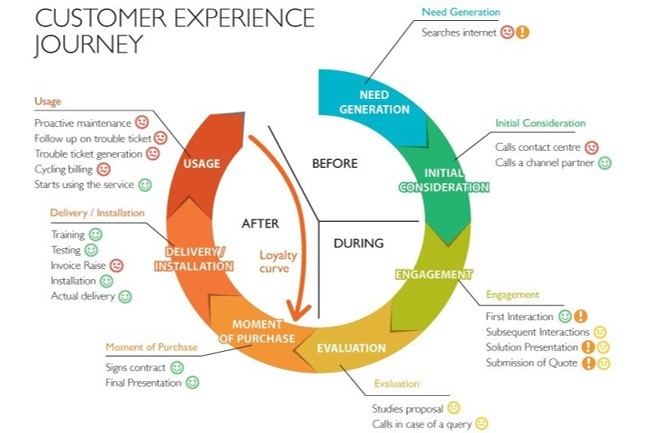Ready or Not, Industry 4.0 Is Here
Many articles and posts on digital transformations and Industry 4.0 focus solely on technology enablement. In doing so, they underestimate the negative impact of poor organizational alignment.
Assuming that employees can do both their day job and be handed a new set of responsibilities for digital initiatives will negatively impact the potential value of such projects.
Several recent articles including the one by Michael Brito, Digital Transformation: Four Ways To Ensure Adoption From Your Employees, highlights how organizational heritage can and will hamper transformation initiatives.
As companies embark on their journey to the 4th Industrial Revolution, the ones that are willing to bring in new leadership and make the organizational enhancements to power new digital customer relationships will be the ones that rise above the fray.
What Digital Transformation Is Not
A recent article in Forbes, Three Clear Signs Your Digital Transformation Isn’t Transformational, contributed by Barry Libert at Open Matters, suggests that some companies wrongly believe that digital transformations are just “a collection of activities”:
- Process improvement;
- Operational improvements (doing things better, faster, cheaper);
- Adoption of new technologies (cloud, social, mobile, big data);
- The same teams and the same budget trying to do something a little different.
Others focus initiatives as a way to drive more sales. Selling “shiny new objects” creates great excitement but ensuring successful digital transformations takes extra work. New digital customer engagements (physical and virtual) are of the greatest value when they don’t solely focus on selling something. In fact, intermittent, reactive, uncoordinated and out-of-context customer interactions can create internal friction and poor customer engagement.
To increase customer lifetime values, one that contributes to your top-line growth and bottom-line efficiencies, take the time to truly understand your customers and your organization in their new digital context.
Your New Digital Customer Lifecycle Journey
Customer segmentation and personas drive successful product, marketing, and sales programs. The same analysis applies to your organizational requirements.
Start with a clear understanding the following:
- Who (target segments and buyer/user personas)
- What (solution, business model and value proposition)
- Where (new or existing channels)
- How (deployment, on-boarding, training, support, and billing)
- Why (measuring success for you and your customers)
Then create a map that starts with prospecting and continues through support and retention efforts. The following graphic from The Interaction Design Foundation provides a nice outline.

You will need to augment a basic journey like this with the people and the information requirements and sources at each step.
Based on this analysis, you will quickly recognize that buyer personas (researching, evaluating and purchasing) as well as the user personas (deploying, using and supporting) are NOT the same individuals who traditionally engaged around your legacy products. Similarly, your existing sales, support, operations and other teams are likely not be best suited to deliver your new digital initiatives.
Your Target & MVO Organizational State
Your organizational alignment follows from the processes, the people (not individuals or title but rather skills and expertise) and systems (driven by the information requirements) required to achieve your desired outcomes. Similar to product management, you will need to establish a target end-state, a roadmap and a minimum viable organization (MVO).
With a clear path in hand, you can communicate a clear message, provide specific guidance and make adjustments along the way. Getting everyone on the same page early with a singular vision will help smooth over the bumps in the process.
Employee Buy-In
When employees understand the vision and participate in its development and growth, organizational changes become a more transparent and less stressful process. However don’t stop there. Be sure to provide the training, time and budget to deliver on your new organizational objectives. Also don’t forget to align compensation with new program expectations.
By answering the “what’s in it for me” question, employees will feel a closer bond with the initiative. While this may sound simple, in my experiences, it’s one of the most overlooked part of the digital transformation process.
Make Organizational Alignment A Priority
Digital transformation is both a technology and a management challenge. Focusing on one without the other is not a recipe for success. Instead, companies should adopt a more holistic approach – one that starts with customers and their lifecycle journeys in the context of your new digital initiatives. Doing so, will help drive the ideal product, sales and marketing programs as well as organizational structure.
More about Cloud Enablement and IIoT: An interview with Ian Kanski, CTO of UrsaLeo
 This article was written by Michael Riemer, Managing Partner, New Urbana, and originally it was published here. Michael is an “accidental” entrepreneur with 33+ years of successfully building things – products (SaaS, IoT, & hardware), services (communications networks), and companies. A three-time co-founder with five patents (NLP and transporation safety), and three exits as well as being an early executive at Nextel leading the go-to-market strategy and product management.
This article was written by Michael Riemer, Managing Partner, New Urbana, and originally it was published here. Michael is an “accidental” entrepreneur with 33+ years of successfully building things – products (SaaS, IoT, & hardware), services (communications networks), and companies. A three-time co-founder with five patents (NLP and transporation safety), and three exits as well as being an early executive at Nextel leading the go-to-market strategy and product management.
Sorry, the comment form is closed at this time.




Pingback: Ready or Not, Industry 4.0 Is Here – IoT – Internet of Things